The Great FiDi Landgrab
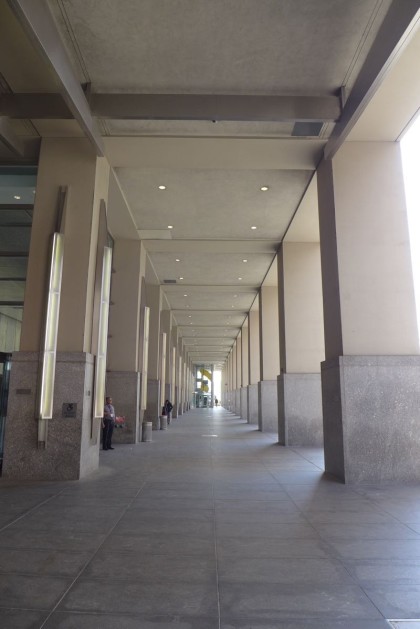 Decades ago, the city allowed developers along Water Street to build taller in exchange for creating privately owned public spaces, in the form of both plazas and arcades (open-air corridors along the edges of buildings). Now, the Downtown Alliance, the Department of City Planning, and the New York City Economic Development Corporation are pushing to give the arcades back to the building owners, so that they can be incorporated into the buildings; any public use will be eliminated. Last month, Community Board 1 rejected the plan. Two nights ago, even though the plan has not substantially changed, CB1 approved it in a very close vote. The City Planning Commission hearing is this upcoming Wednesday, March 30.
Decades ago, the city allowed developers along Water Street to build taller in exchange for creating privately owned public spaces, in the form of both plazas and arcades (open-air corridors along the edges of buildings). Now, the Downtown Alliance, the Department of City Planning, and the New York City Economic Development Corporation are pushing to give the arcades back to the building owners, so that they can be incorporated into the buildings; any public use will be eliminated. Last month, Community Board 1 rejected the plan. Two nights ago, even though the plan has not substantially changed, CB1 approved it in a very close vote. The City Planning Commission hearing is this upcoming Wednesday, March 30.
Doing something with the arcades could be a great idea. But why is the city not getting anything in return? All that’s being asked of building owners is a promise to make improvements—such as adding planters and trees—to the plazas. (Bear in mind that the maintenance of the plazas has been the owners’ responsibility from the start.) Shouldn’t they pay for the land?
We’re not just talking about odds and ends, either. According to the City Planning Commission, “The projected development sites are anticipated to generate 167,357 gsf of retail space, approximately 26,967 gsf of office space, and approximately 2,016 gsf of residential space. […] The Proposed Action would likely lead to a reduction of 105,411 sf of total arcade space.” (The space created is higher because the many of the arcades are double-height; see the rundown here.) If the space getting transferred is around 200,000 gross square feet, as described above, and rents are a conservative $200 per square foot, the city is throwing away $40 million.
UPDATE 3/28: There’s a response from Downtown Alliance at the end of the post.
Here’s a map you can click to enlarge. Blue indicates an arcade; pink indicates a plaza.
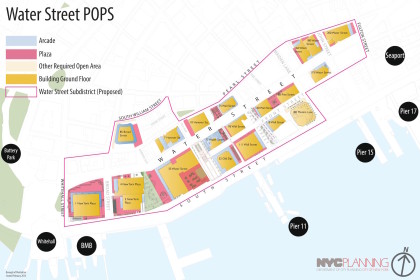 When you look at the arcades themselves, the scope of the landgrab really becomes clear. Many of them turn corners, which explains multiple shots for a building (although I didn’t bother going all the way around 75 Wall or 85 Broad). The owner of each of the 17 buildings is in parentheses; an asterisk indicates the owner has a representative on the Downtown Alliance board of directors.
When you look at the arcades themselves, the scope of the landgrab really becomes clear. Many of them turn corners, which explains multiple shots for a building (although I didn’t bother going all the way around 75 Wall or 85 Broad). The owner of each of the 17 buildings is in parentheses; an asterisk indicates the owner has a representative on the Downtown Alliance board of directors.
200 Water (Rockrose):
180 Water (Emmes Realty):
175 Water (AIG):
160 Water (160 Water Street Association):
100 Wall (Cornerstone Real Estate Advisors*):
110 Wall (Rudin Management*)
111 Wall (Citigroup):
95 Wall (The Moinian Group):
75 Wall (The Hakimian Organization):
77 Water (Unknown 51%, the William Kaufman Organization 49%; represented by Cushman & Wakefield*):
32 Old Slip (RXR Realty*):
7 Hanover Square (Milstein Properties):
55 Water (Retirement Systems of Alabama):
2 New York Plaza (Whitehall Properties):
1 New York Plaza (Brookfield Office Properties*):
4 New York Plaza (Edge Fund Advisors):
85 Broad (Metropolitan Life Insurance):
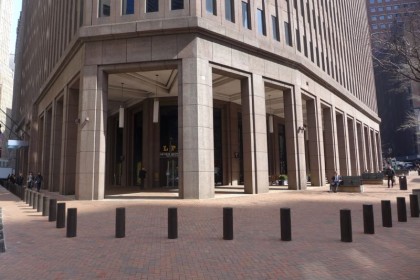 UPDATE 3/28: Jessica Lappin of the Downtown Alliance sent in a response:
UPDATE 3/28: Jessica Lappin of the Downtown Alliance sent in a response:
We wanted to correct some facts and misleading impressions your recent piece “The Great FiDi Landgrab” may have left your readers with.
The Water St. text amendment approved by Community Board 1 on last Tuesday night (after being approved in two separate CB 1 Planning Committee votes) is the result of nearly 7 years of community driven planning lead by the Downtown Alliance. A diverse group of stakeholders including residents, not for profits, educational institutions, urban planners, elected officials, retailers and property owners together shaped the effort.
Among the top priorities for Water St. expressed over and over again by residents and those who work along the corridor is the need for a livelier more dynamic street life. A Water Street with more shops, restaurants and services. That can be only achieved by improving the street’s poorly designed and underused public spaces.
The proposed text amendment requires property owners to make substantial investments in the public spaces surrounding their buildings. Additional retail space is conditioned on the completion of plaza upgrades. These upgrades are not optional, they are not vague promises made by developers. They would be extensive, comprehensive and required by law. These arcades (all of which are already privately owned) will be reinvented as vibrant and attractive small-mid-sized retail spaces appropriate for restaurants, cafes, community facilities and independent businesses.
Everyone has recognized for many years that the plazas along Water Street are a planning failure. They have proved themselves to be a bad deal for community The question has always been how to fix the problem. Quite different from the impression the article seeks to impart, the proposed changes to Water Street we are advancing in partnership with City agencies are part of a well and broadly considered plan. It is literally the furthest thing from any kind of hastily pulled together, sub-rosa effort snuck in to facilitate a giveaway to a cabal of landowners that your piece seems to want to imply
We believe these changes would be a major step forward in helping the street realize its potential as an exciting place to live, work and visit.







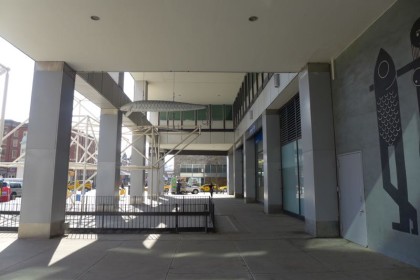
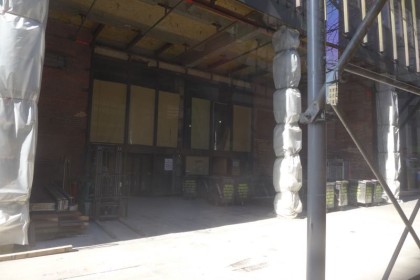
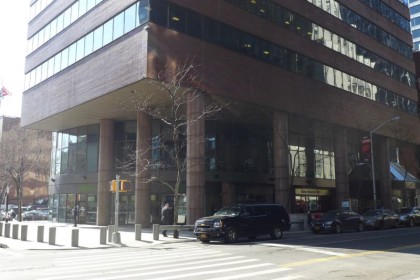
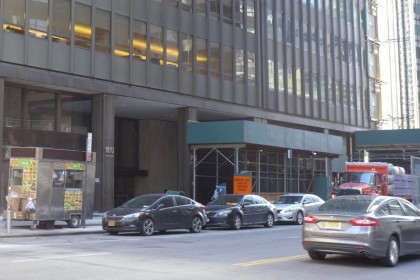
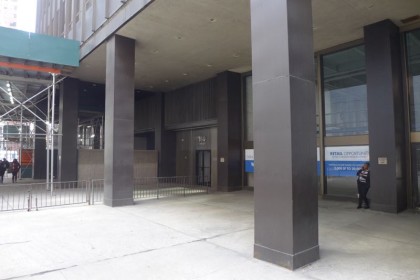
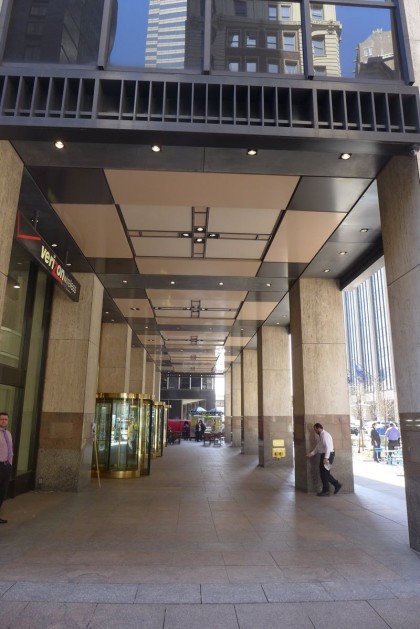
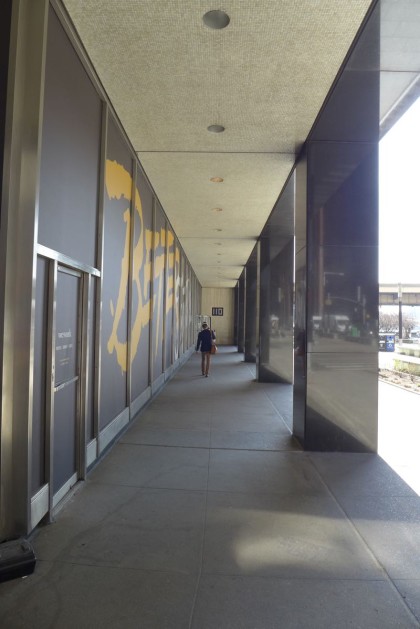
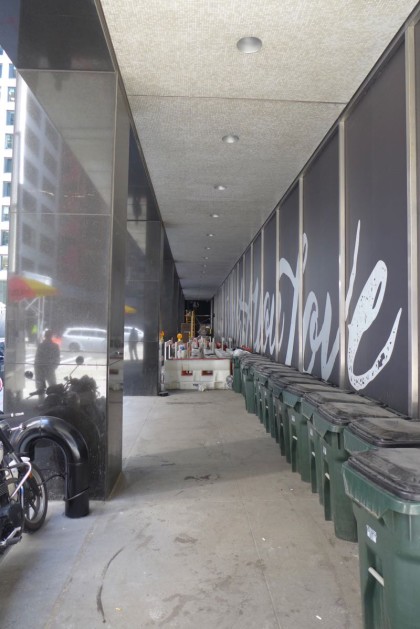

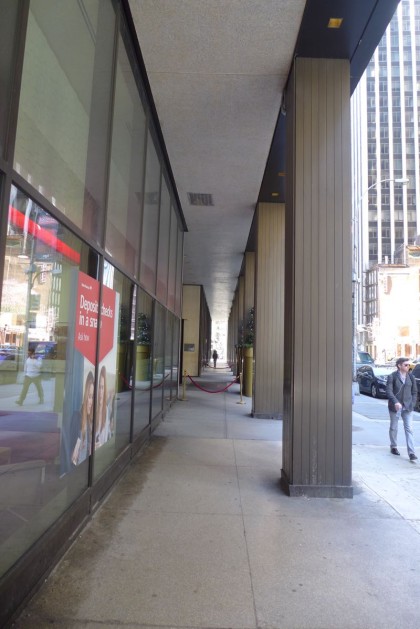
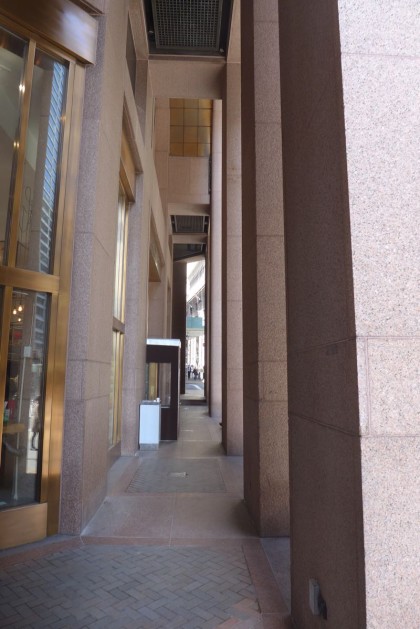
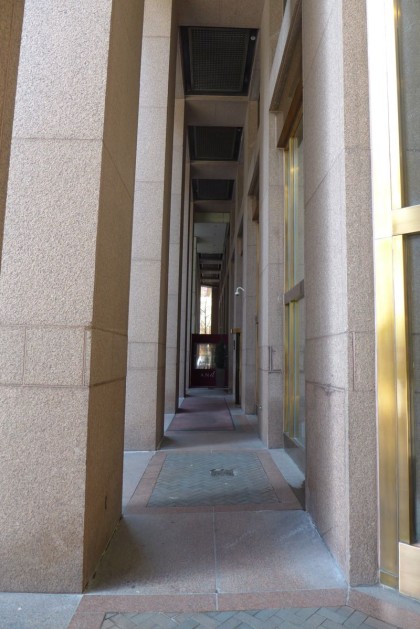
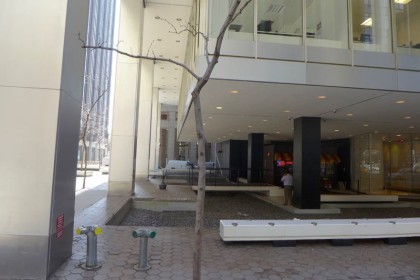
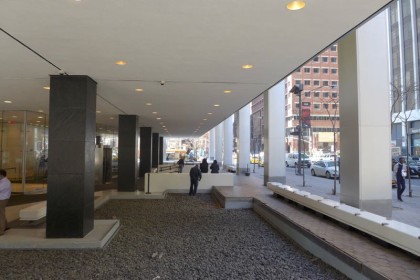
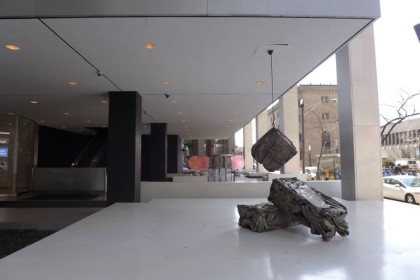
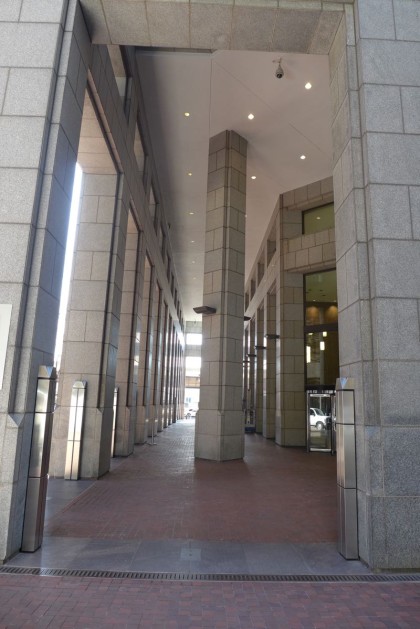
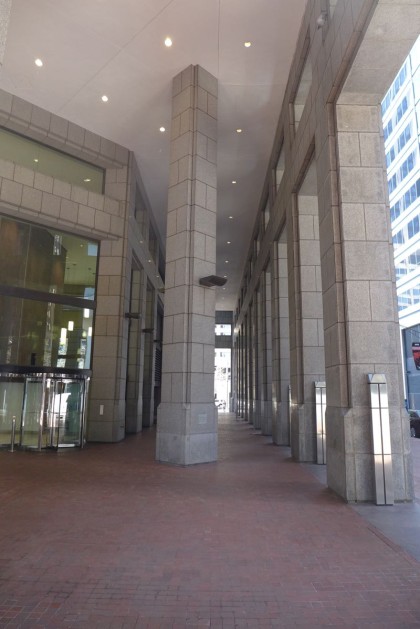
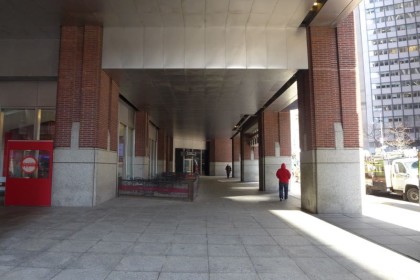
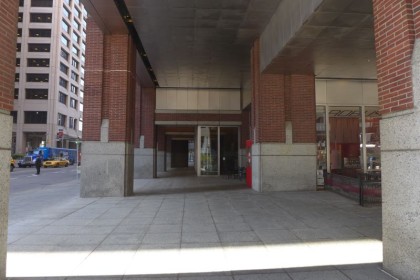
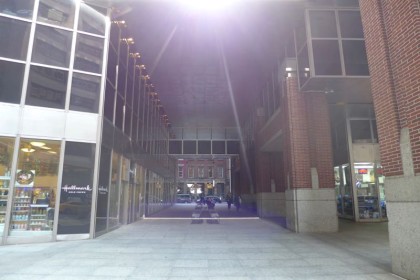
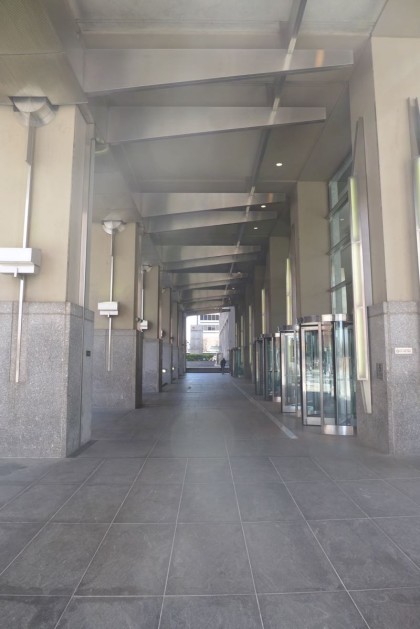
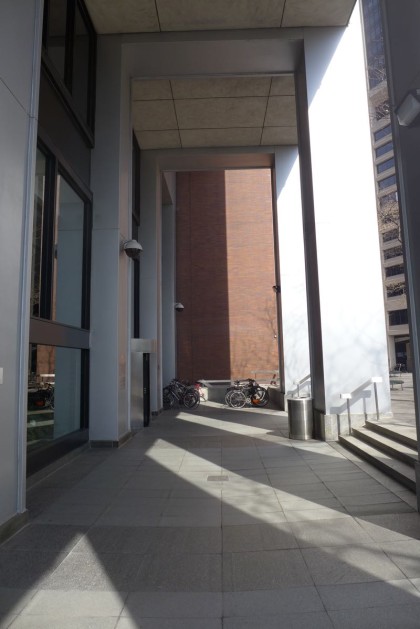
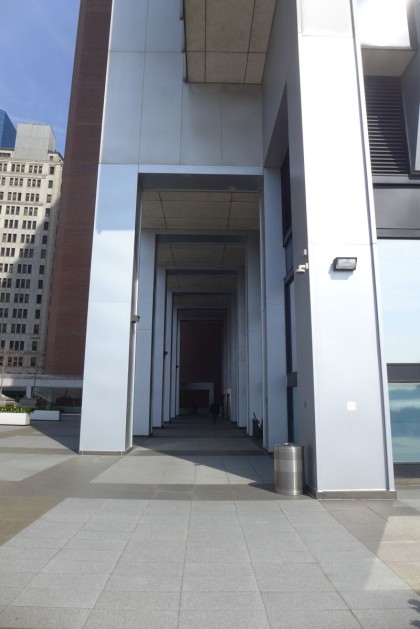
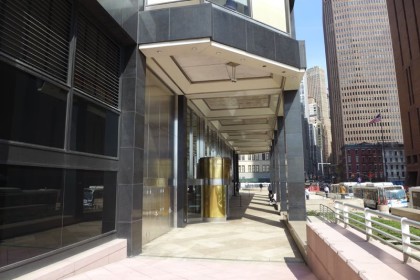
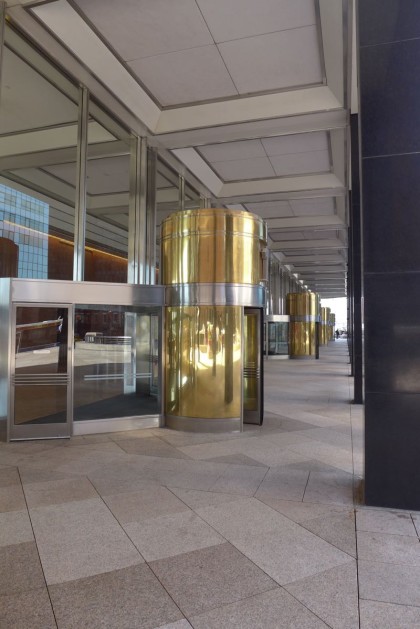
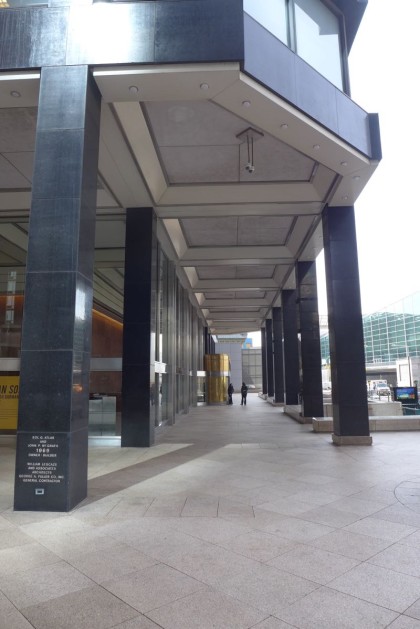
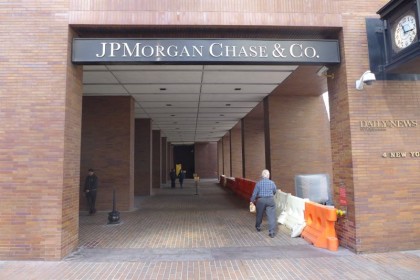








This was a super valuable service to grab and label all the pictures, which will make for a super before and after.
But I have to completely disagree with your analysis. Those arcades represent an urban planning disaster, being used for little more than cover for smokers in the rain. Converting them all to vibrant retail will make Water St. so much more appealing as a place you actually want to walk around in.
That may be so. But the building owners should still have to pay for reclaiming the land.
I have to agree with Don. The arcades and plazas have been an epic fail. We want and need to redevelop Water Street to be a vibrant new center for the Financial District and a huge part of it is repositioning those awful arcades as new retail including restaurants and cafes. The conversion needs to be encouraged by the city and all of us, including the city, will benefit. I’m thrilled that CB1 approved. Now let’s get started! :-)
Eric has a good point. And while I agree that Water Street certainly needs these changes, the owners of these properties did receive zoning bonuses for these plazas, good or bad urban planning aside. I think a few per dollars per sq ft recovered is a reasonable compromise, maybe a one time payment, as this will increase their RE tax bills.
The Big Payback?? There should definitely be some conditions or remuneration attached to the reclamation of the arcade space
The Community Board made the right decision. What the city gets in return is a vibrant thoroughfare that the landlords will be incentivized to reclaim ASAP rather than piecemeal of the years as SOME decide to purchase the extra rights and others decide it’s not worth it. Having them done all at once will result in properties that are more valuable, leading to higher assessments which will lead to higher taxes revenue.